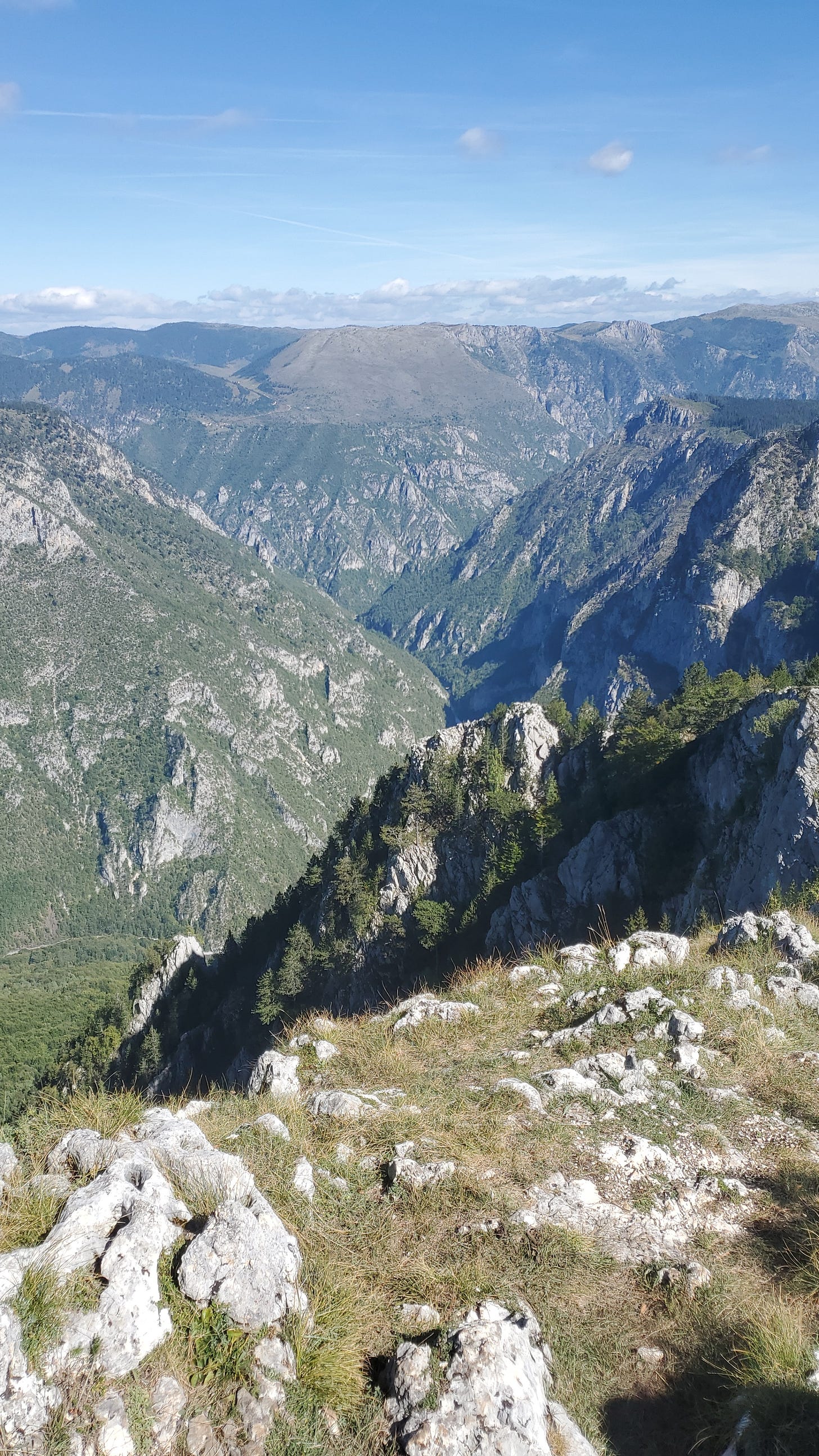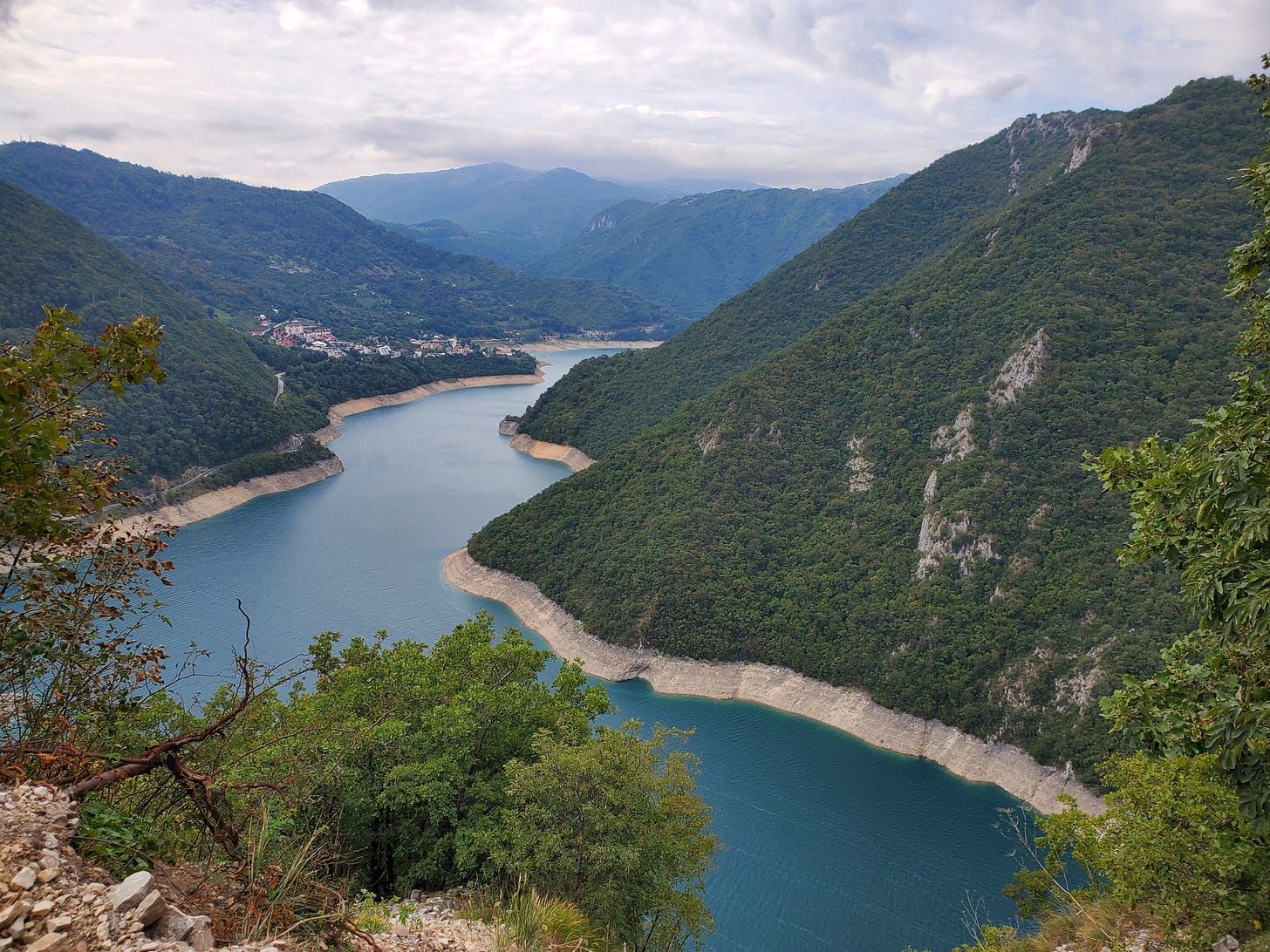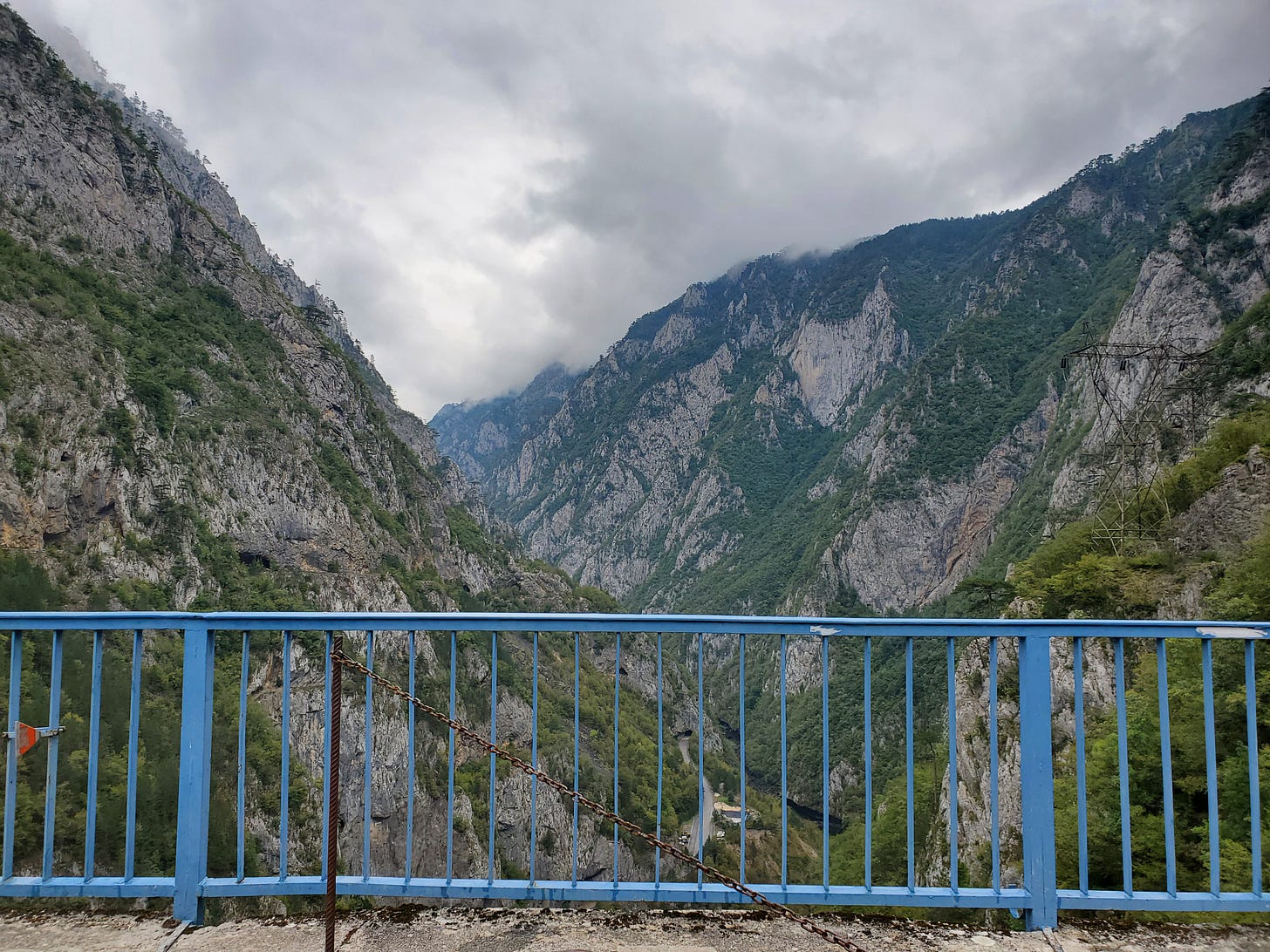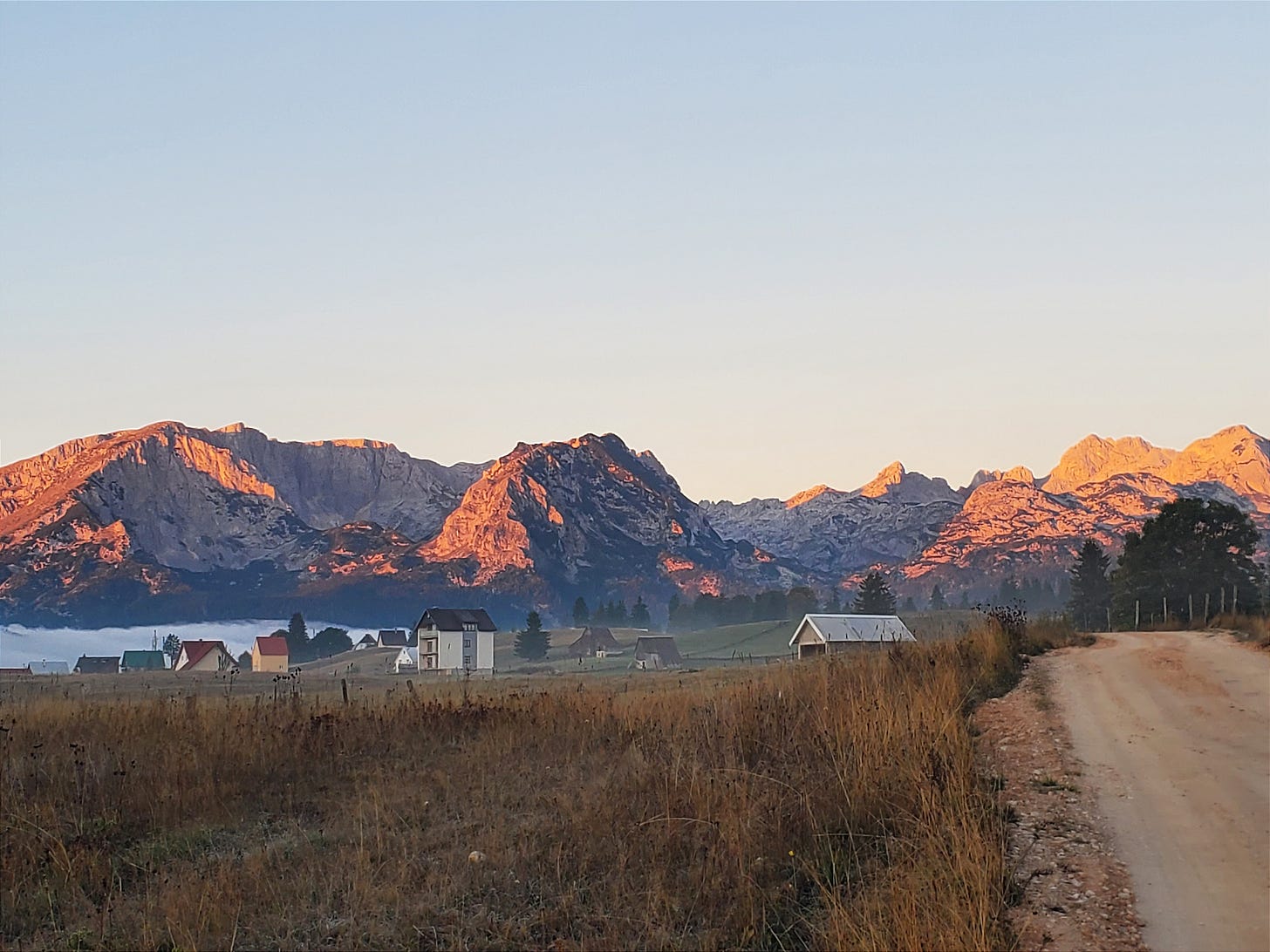
By any measure, Durmitor National Park and its surroundings in northwestern Montenegro is one of Europe’s Top 10 wildernesses. We zigzagged seven hours from western Kosovo to get there, on precarious paved roads hardly ever wide enough for two cars to pass, and blind curves galore. Our Albanian rental company had disabled the horn on our upgraded, full-size Renault SUV, so such hairpin curves were negotiated with the utmost care, in dead silence, hugging a rock wall or edging along a precipice. Along less stressful stretches, Jeff practiced on his pocket trumpet, getting ready for the next jam session in some urban bar or public plaza.
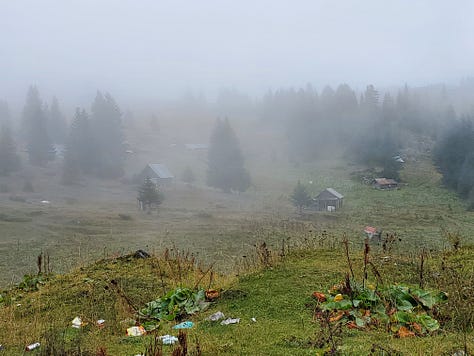


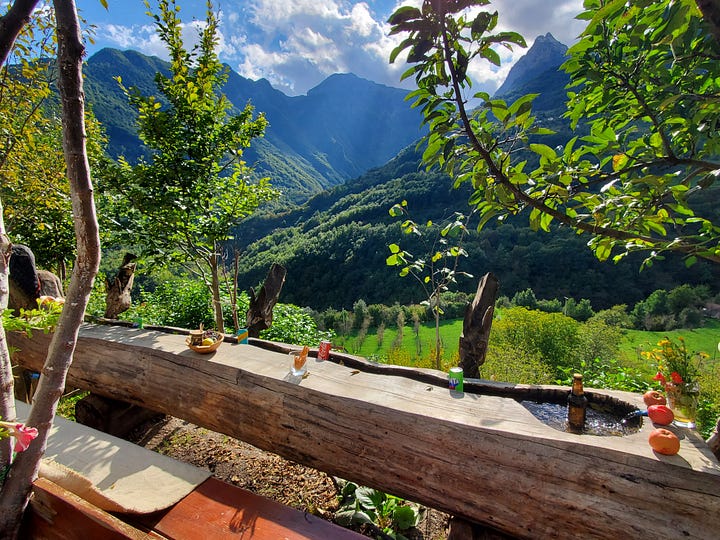
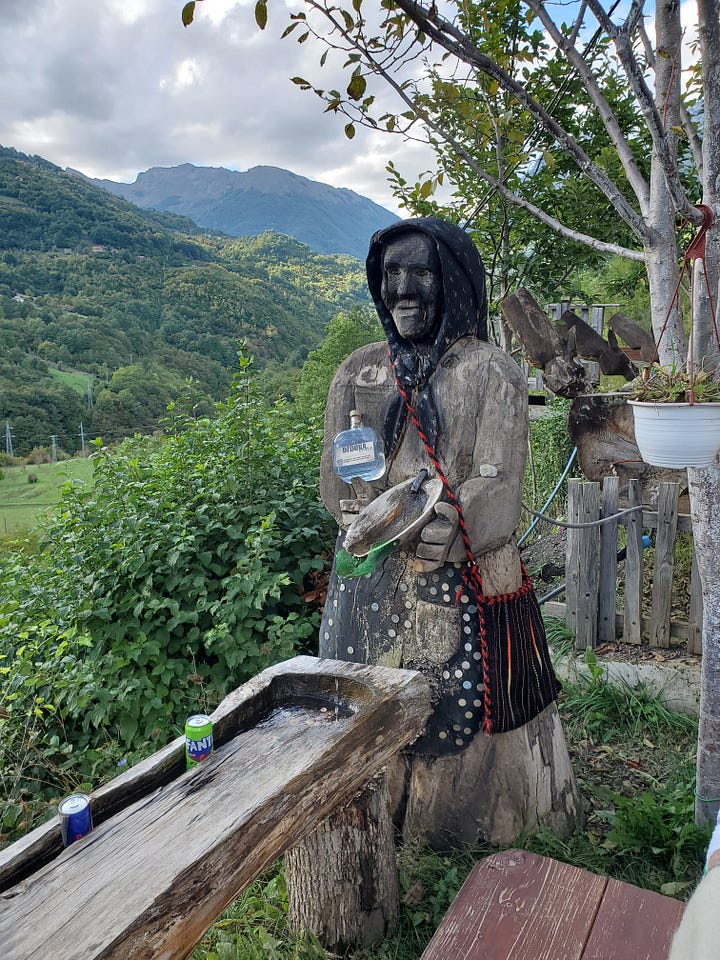
Most of the rapidly growing number of tourists who make it to Durmitor arrive on a more reasonable highway from Kotor or Podgorica in the sunny south. Our route snuck us in through what seemed to be one of the wildest, most heavily forested and least populated parts of the Balkans. We had a break from the white-knuckle driving at a roadside restaurant perch, with somehow the best coffee we tasted in nine countries (which is saying a lot in that part of the world, particularly with Sarajevo and Trieste in the mix).
Once atop the grassy, mile-high Sinjajevina Plain, with deep sighs of relief we exited the narrow country lane we had spent the last three hours on, onto a regularly narrow road that went by the burgeoning alpine resort town of Zabljak (“SHOB-lee-ock”) and then on through a series of angular, bumpy gravel tracks to our cozy chalet, the newest in a row of them tucked into the edge of the spruce forest.
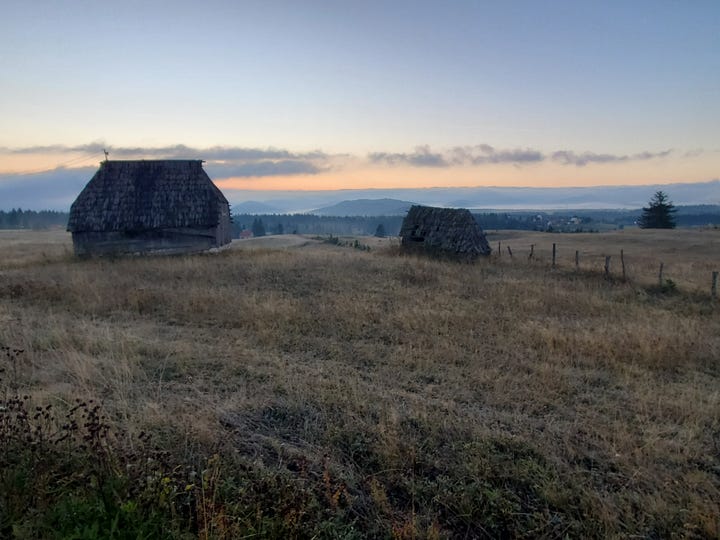
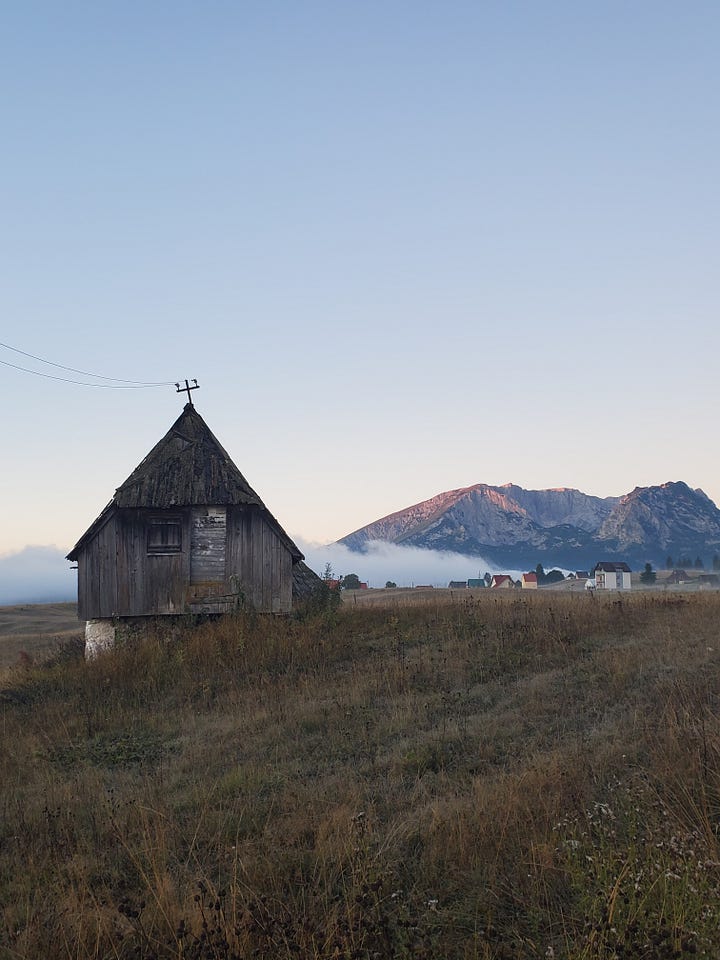

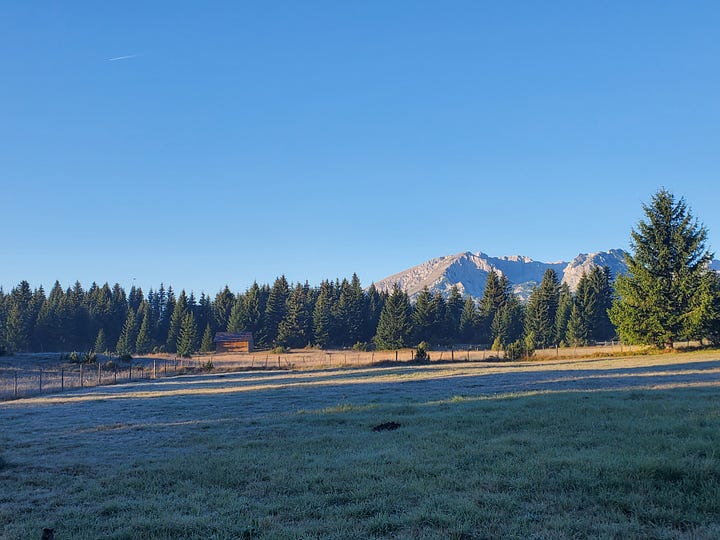
The birding hour
I was up well before dawn for the chorus. Merlin did very well, correctly ID’ing the peeps and songs of the earliest risers in and above the thick forest — Eurasian Robin, Hawfinch, Common Chaffinch, Eurasian Blackbird. With temperatures in the 20s, I had to move quickly from spot to spot along the edge of the plain to keep from freezing. The Durmitor massif, bathed in pink, was fronted by a few architectural relics of a largely abandoned vernacular pastoral landscape. Sprouting elsewhere like mushrooms were dozens, if not hundreds, of tasteful and not-so-tasteful cabins, chalets, weekend homes, and even condos, testament to the rapid tourist development in the region.
First into the visible sky were hundreds of raucous Hooded Crows who streamed out of the blackish depths of the forest, swirling overhead and disappearing in the direction of Zabljak. As the sun reached my pacing ground, flocks of thrushes, tits, and others rushed in from all directions, converging on a grove of Norway spruce (or were they silver fir?) and from there, diving down to bare patches around the many construction sites eating away at the old pastures. This was, I surmised, a migrant wave, some consolation for missing it in my own hemisphere. The only species that raised an eBird eyebrow was the Fieldfare, a spot-breasted Turdus fresh from the far north; when I returned the following (rainy) morning, many more of them were about.
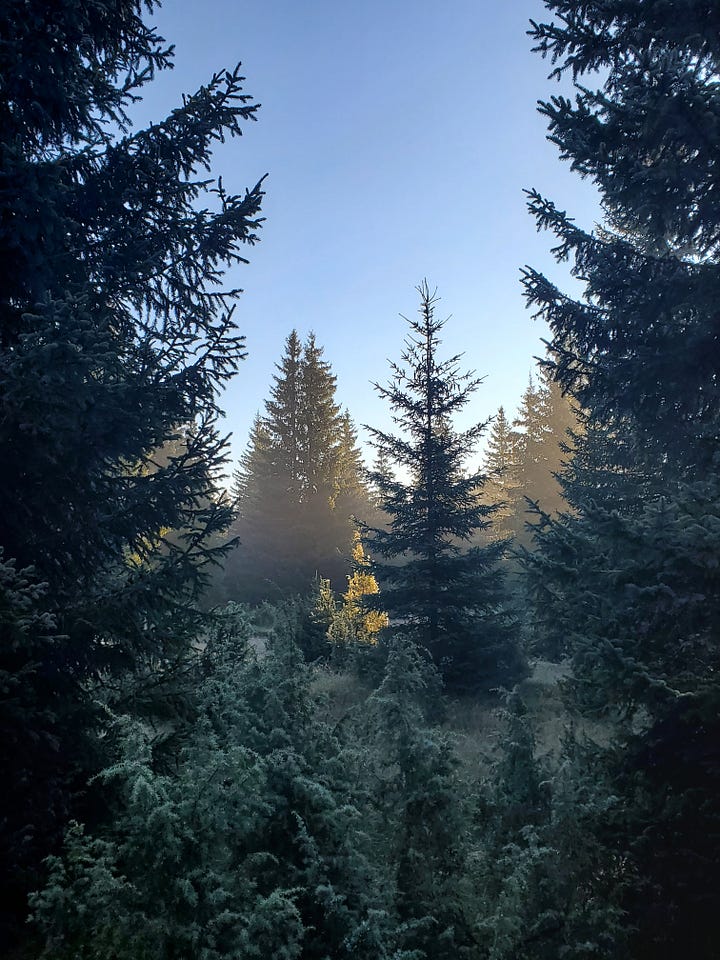
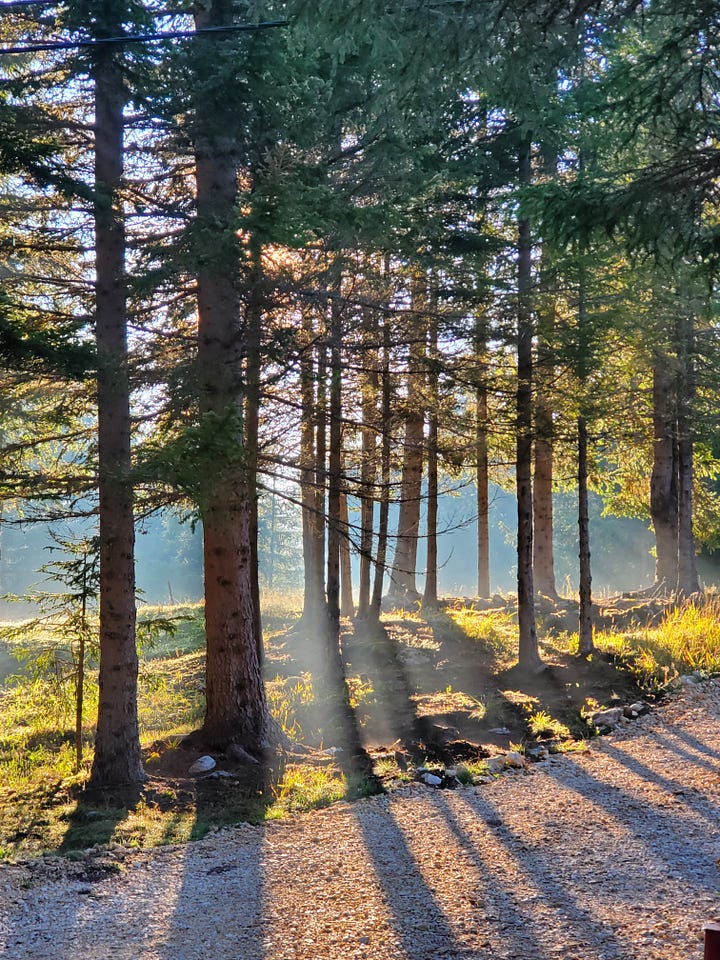
About as deep as it gets
Later, we headed to the best vantage points for the Tara River Canyon, one of Earth’s deeper gashes, 4,300 feet down at certain points and 50+ miles long. Our first attempt, at the Đurđevića bridge, was a bit disappointing. The span, 564 feet over the river, was undergoing loud and dusty construction (merited, no doubt, as it was erected during the Kingdom of Yugoslavia era in the late 1930s).
Our second try was a hike to Ćurevac, at the edge of the national park. At the entrance kiosk, we were bystanders to one of the only unpleasant interactions of our entire trip: An athletic, 40-something tourist with a non-Balkan accent arguing in English with the Montenegrin park employee who would not refund her second entrance ticket. Why the increasingly irate foreigner had purchased two was beyond us or the employee. He steadfastly refused to give ground, and admonished her in no uncertain terms when she attempted to gift it to us. She finally left, muttering about “them,” and we purchased our own passes in embarrassed silence.
The views did not disappoint - 3,000 feet down to the Tara, with ravens and Alpine Swifts zooming about. Guardrails and warning signs were nowhere to be seen, reminding me a bit of the DIY approach of Latin America, and clearly startling some of the small multitude of tourists from across the continent and beyond.
The highest point of the jagged but gentle climb was a field of limestone boulders with the canyon on three sides. A dispersed village with cars and small vans about was tucked in next to the river. It had a touristy/ancient look, with new chalets, small farms, and what I presumed was an old Serbian Orthodox Church. I stared, fascinated, trying to figure out how cars could possible reach the place, eventually figuring out that the gated gravel road beyond the kiosk parking lot somehow plunged over a half mile nearly straight down to get there, over a horizontal distance of a little over a mile.
We looped back down on a gentler and less jagged trail with no one on it, and giant mushrooms galore.
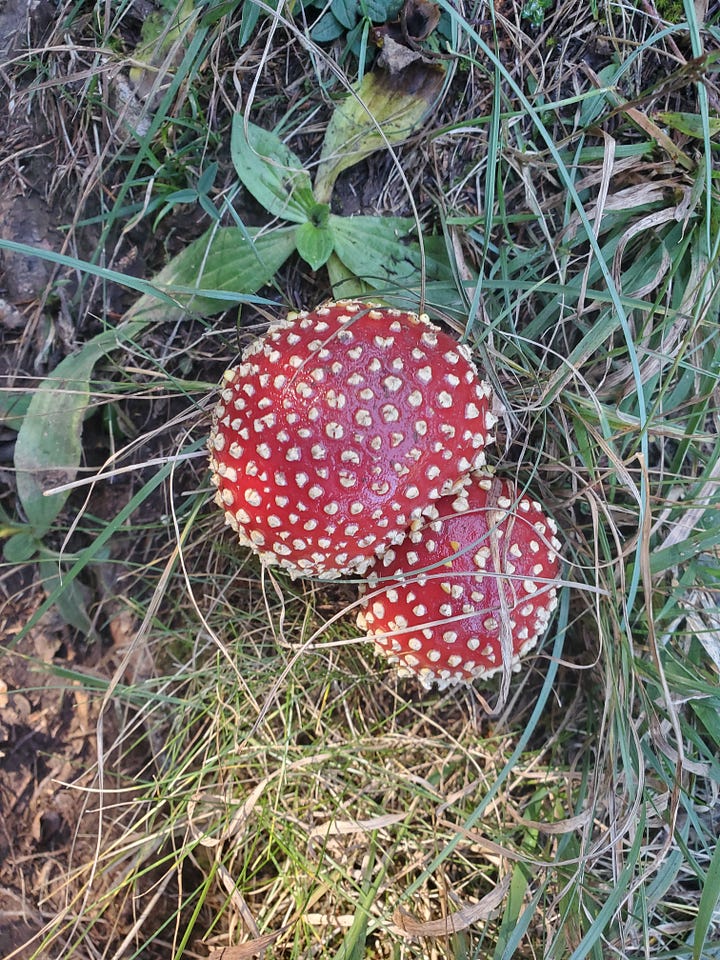
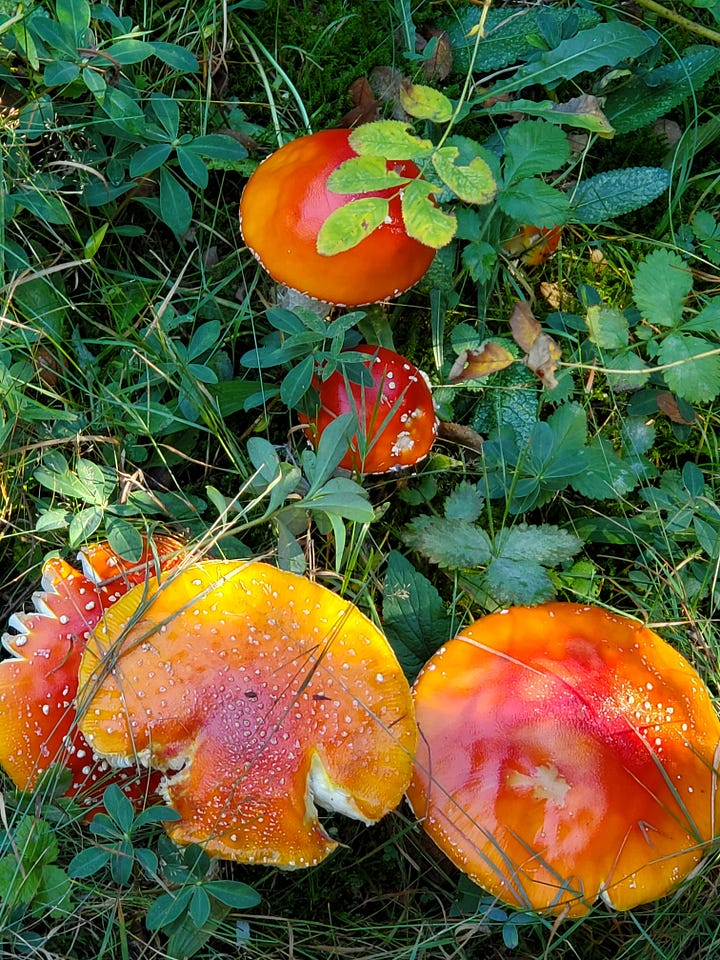
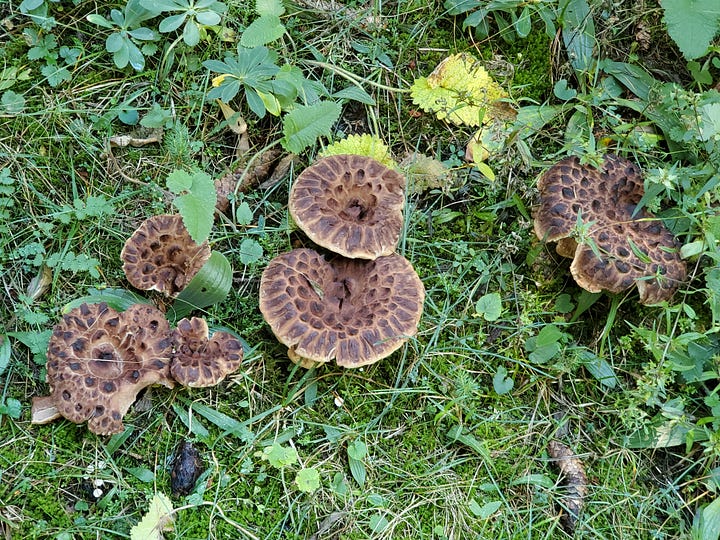
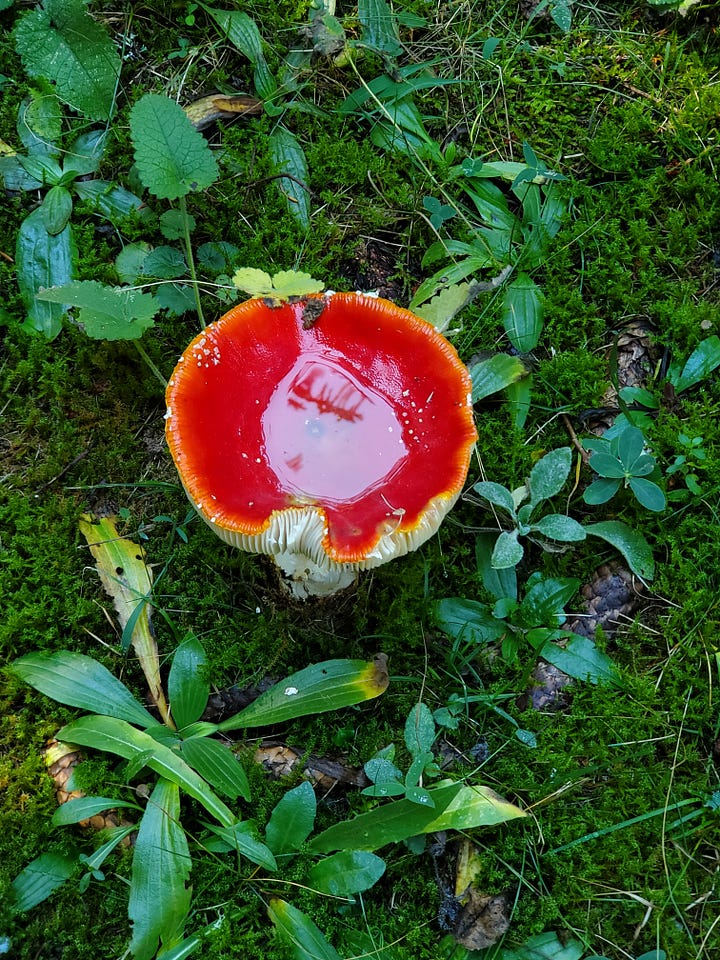
Black Lake
In the afternoon, we we walked to Crno Jezero, the most accessible of the many glacial lakes in the park. The lake is uncomfortably close to Zabljak, which, even though it’s the urban center of the entire northern part of the country, has less than two thousand permanent residents. The town reminds me for all the world of Mammoth, in the eastern Sierras, not least because both places are built for the weather: they’re buried in deep snow for many months.
Were it not for the presence of the national park, the lake would already be engulfed by the town, I think. A well-groomed, flat trail leads from the many parking lots of the condo zone through a towering spruce forest, reminder that Montenegro has some of the oldest and tallest forests left in Europe. Even at the end of September, the crowds were still considerable (mostly Chinese and Japanese tourists in very large groups). Prim kiosks lined the park trail, each selling a large variety of local fruit brandy, honeys, refrigerator magnets, and knit hats and gloves.
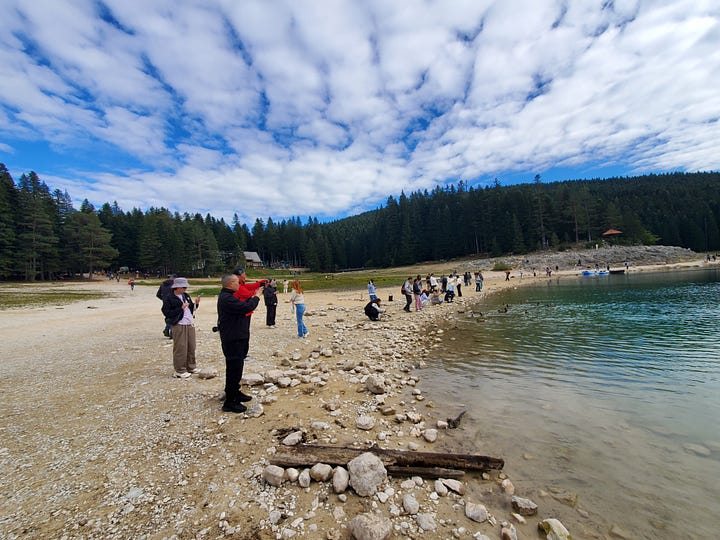
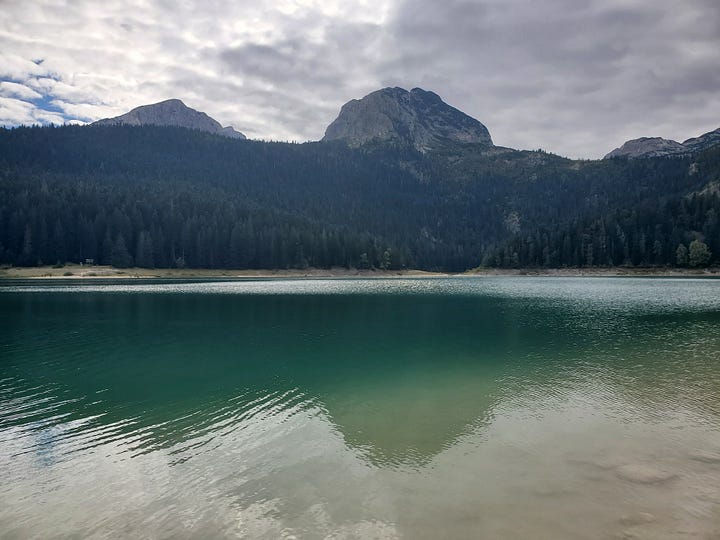
The lake itself is indeed attractive, but it’s tricky to find a spot far enough from the rest of the tourists to get a shot without people in it. I could only fantasize about trekking or snowshoeing off into the backcountry to look for bears and wolves.
That evening, we went to the Restoran Or’O for a Montenegrin feast—like almost every night on a trip with little more than a day per country (except Croatia), we made sure to stuff ourselves on the national cuisine and polish off several rounds of the recommended local beers and brandies (rakija, in this case).
To Bobotov Kuk and beyond
The following morning, the first of October, I scrapped my plan to wake the others for a gorgeous sunrise on the high peaks, as it was cloudy and spitting rain, with snow in the forecast. I repeated the prior day’s walk and scared up the same birds—Goldcrests, Chiffchaffs, Crested, Blue, Willow, Marsh, Coal, and Great tits, a Spotted Flycatcher, a Great Spotted Woodpecker, and many others. At one point I picked up a tail—a raggedy but friendly pup who belonged to someone or another. He or she was nice enough to flush a gorgeous red fox out in front of me, one of the few mammals other than squirrels that anyone saw on the whole trip. The dog’s purpose became apparent when I returned to the chalet—it became even more friendly and appealing until we gave in and handed it the last fragments of a Kosovo feast we had been toting with us for a few days.

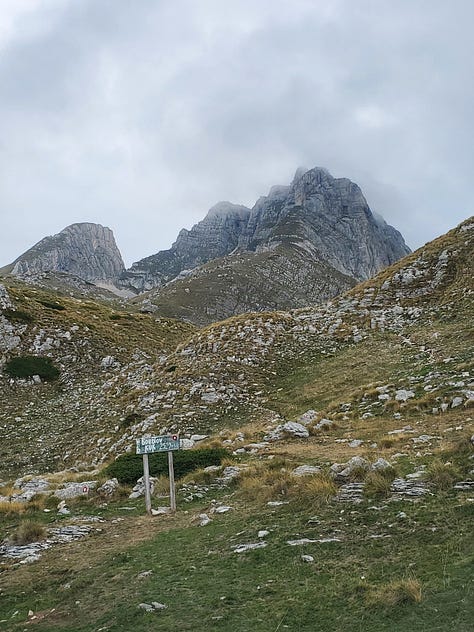
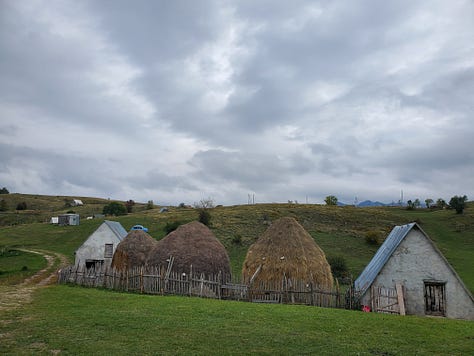
I can’t say anyone was eager to get on the road, with hours of windy, narrow lanes in front of us, at least until we left Montenegro (Sarajevo was the day’s ultimate destination). We first drove up above the tree line, crossing over the Durmitor range in the shadow of Bobotov Kuk (8,278 feet—the center photo above), once believed to be the country’s highest peak. The first part was bitter cold, with Water Pipits blowing about and glacial lakes here and there. After that, I was grateful that between two-thirds and all of my passengers were asleep most of the time. While the first few turns of the trip down the west side of the range were gentle enough, they became increasingly steep, with blind curves aplenty, far narrower than two SUV-lengths across. Indeed, the road was not much more than a paved version of our Plummer’s Hollow lane back home, except the drops were in the hundreds rather than dozens of feet. Thankfully, the only other cars were equally cautious (and sometimes visibly terrified) tourists, until we eventually transitioned to a wider road at the first alpine village.
After some roadside coffee, my passengers bounced back from oblivion, and we wound down into the forested zone toward the Piva River, slightly west of the Tara (both are in the Danube drainage) with an equally deep and spectacular canyon. The road was now thankfully a full two lanes wide as it crawled down a nearly sheer canyon face through a series of ill-lit tunnels in between hairpin turns. At the bottom was Lake Piva, a reservoir ensconced in a landscape as spectacular as any I’ve seen. We headed north and eventually crossed over at the dam, continuing to follow the Piva downstream to its junction with the Tara (where they form the Drina) and the border of Republika Srpska.
Later, we learned that a snowstorm had engulfed the high country just hours after we crossed over. I can’t imagine having gotten stuck up there, 4WD or not. G-d protects fools and innocents, as they say.
NOTE: Montenegro was the fifth of nine countries on this 2025 trip, a whirlwind, 16-day driving adventure mostly to places none of us (my wife Paola and our friends Graciela and Jeff) had ever been. My 5-year-postponed personal goal was to reach 50 lifetime countries by the time I turned 55 on October 8. Stay tuned for more episodes, not in chronological order, as you can tell (this being the first).




